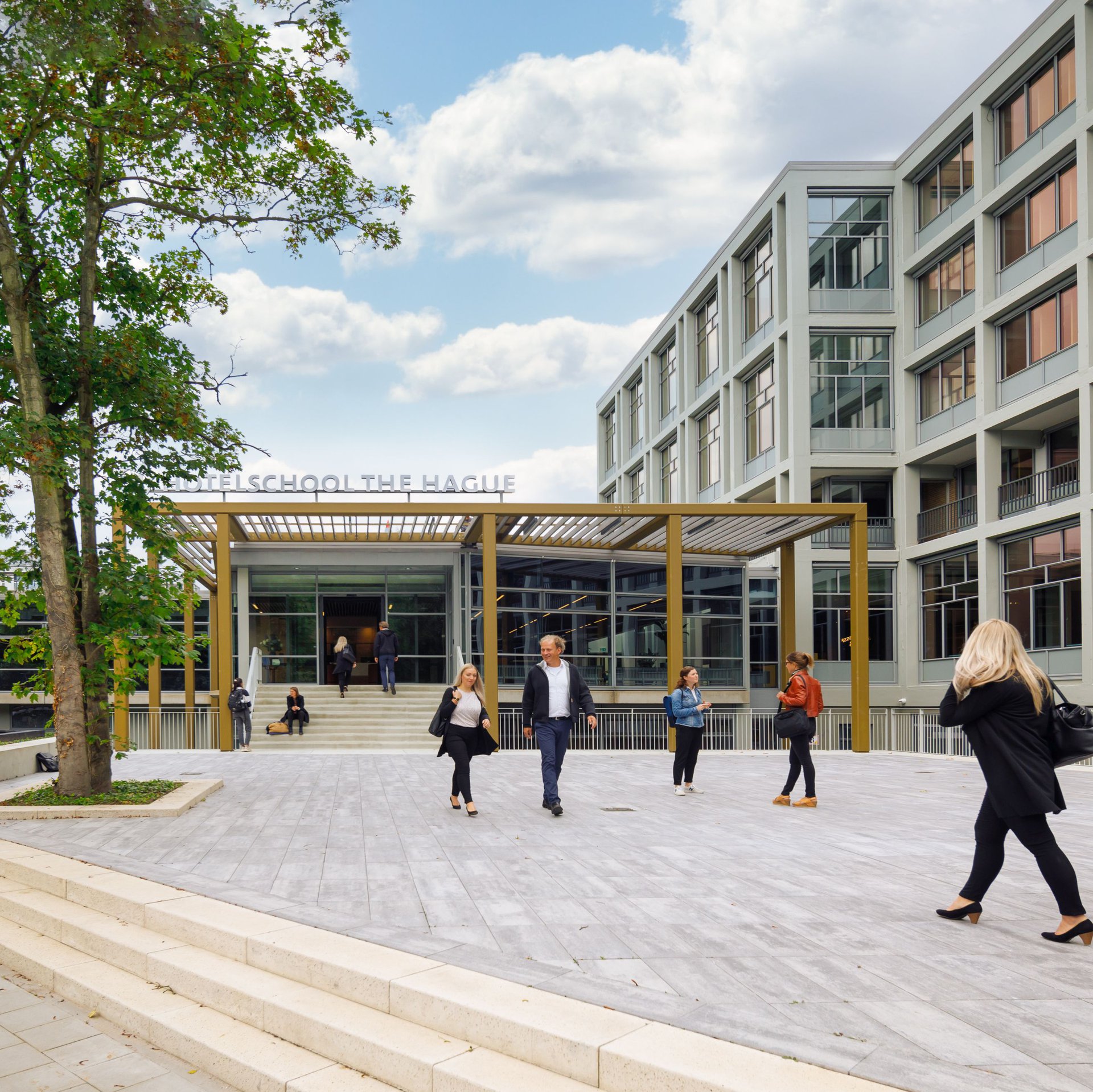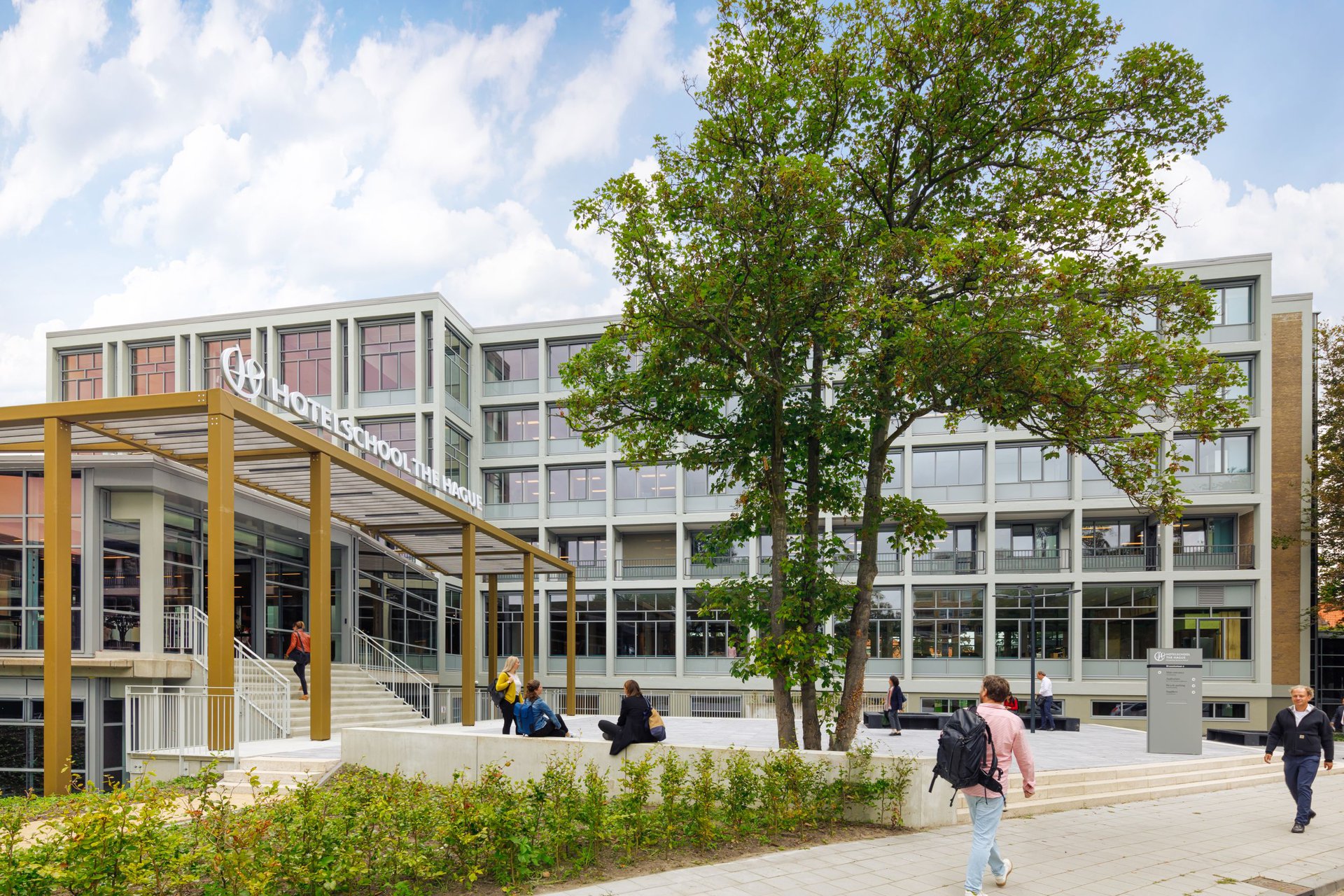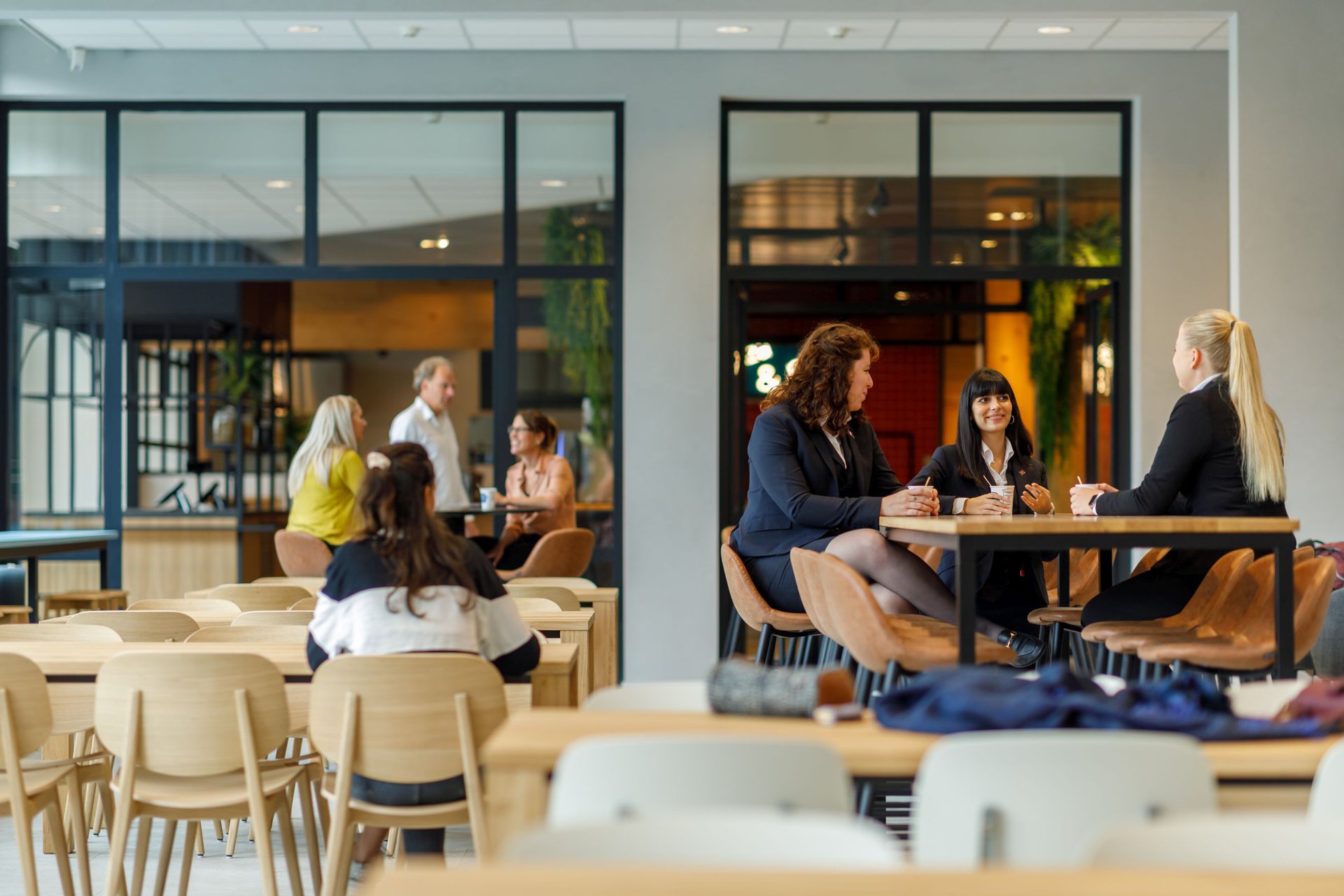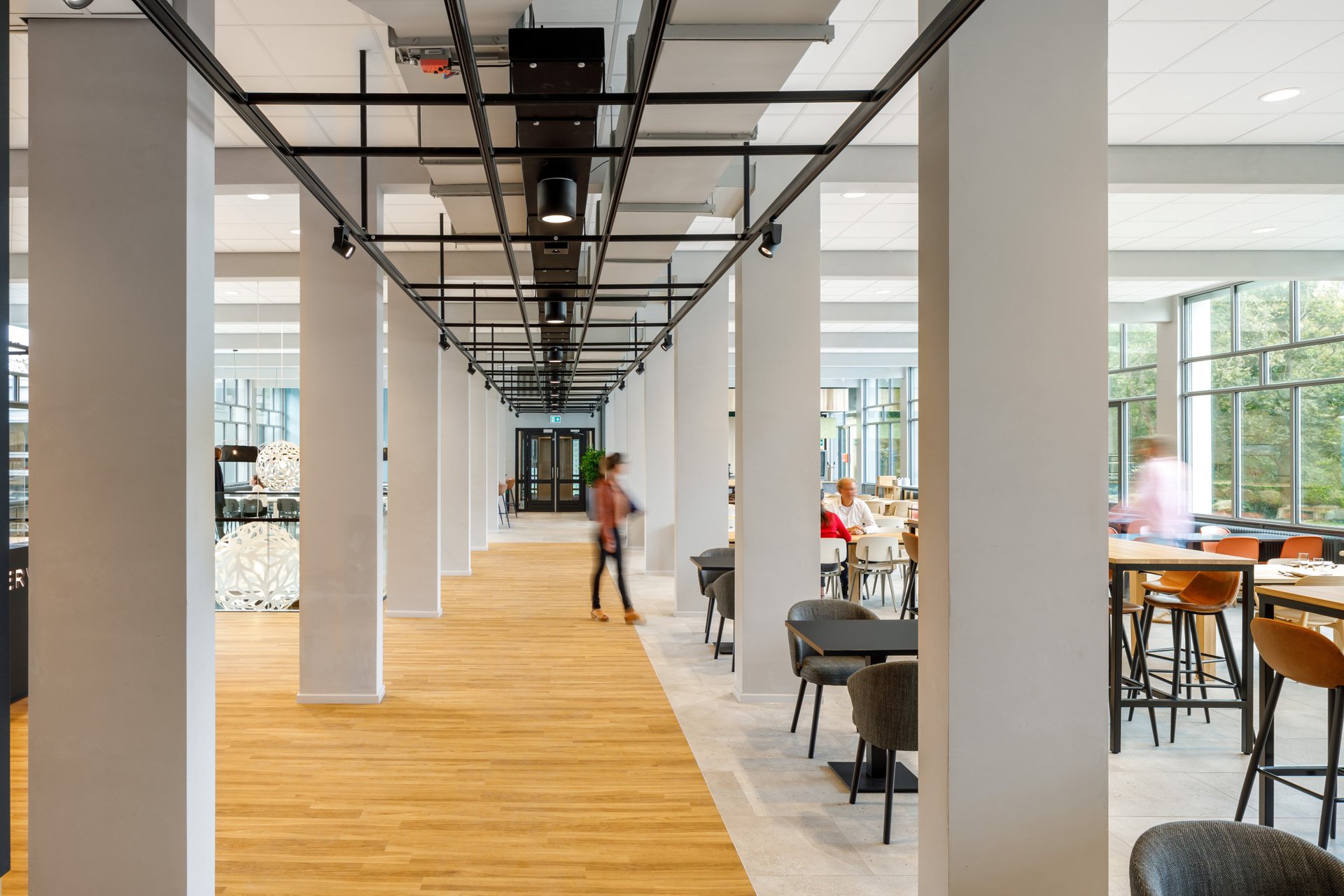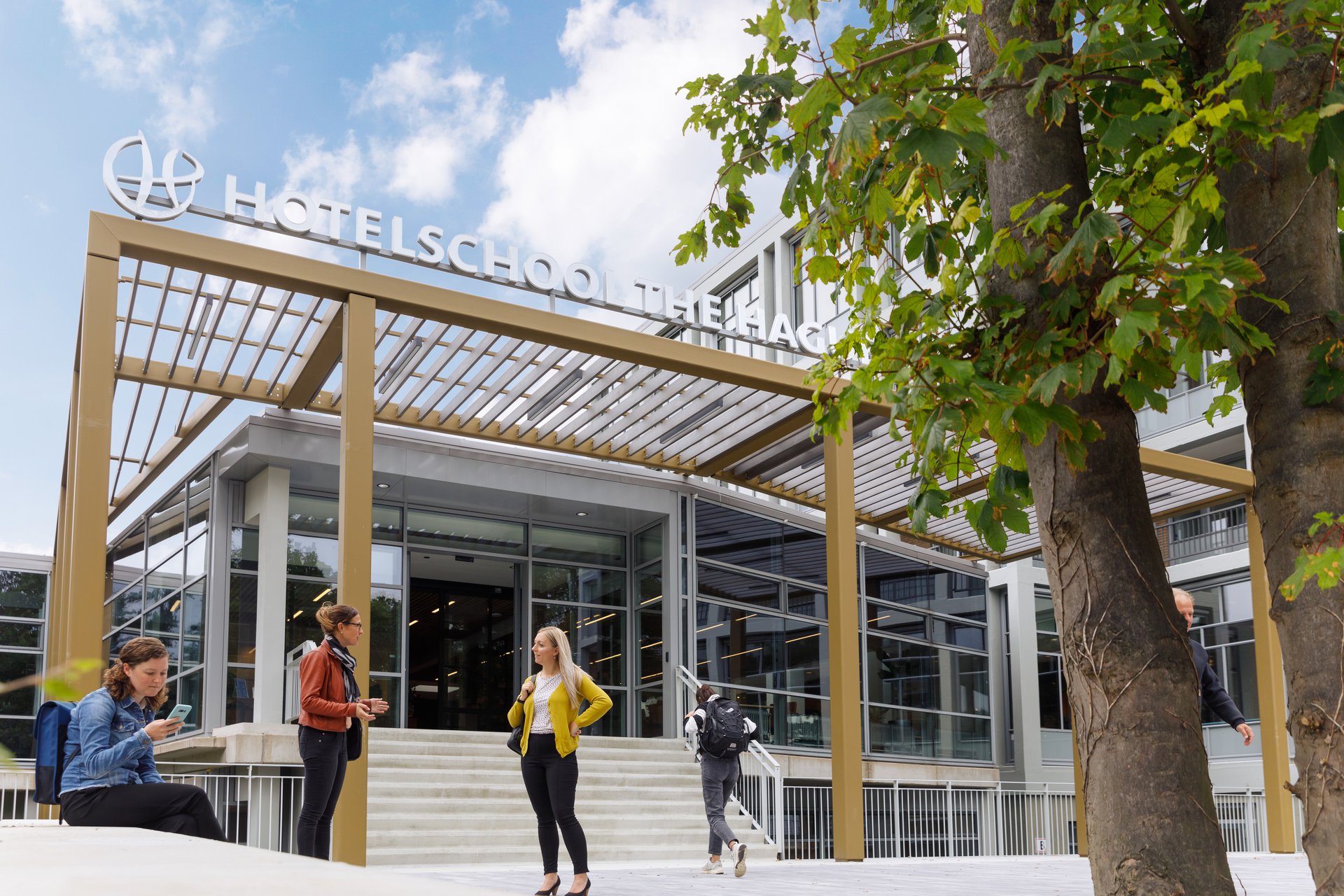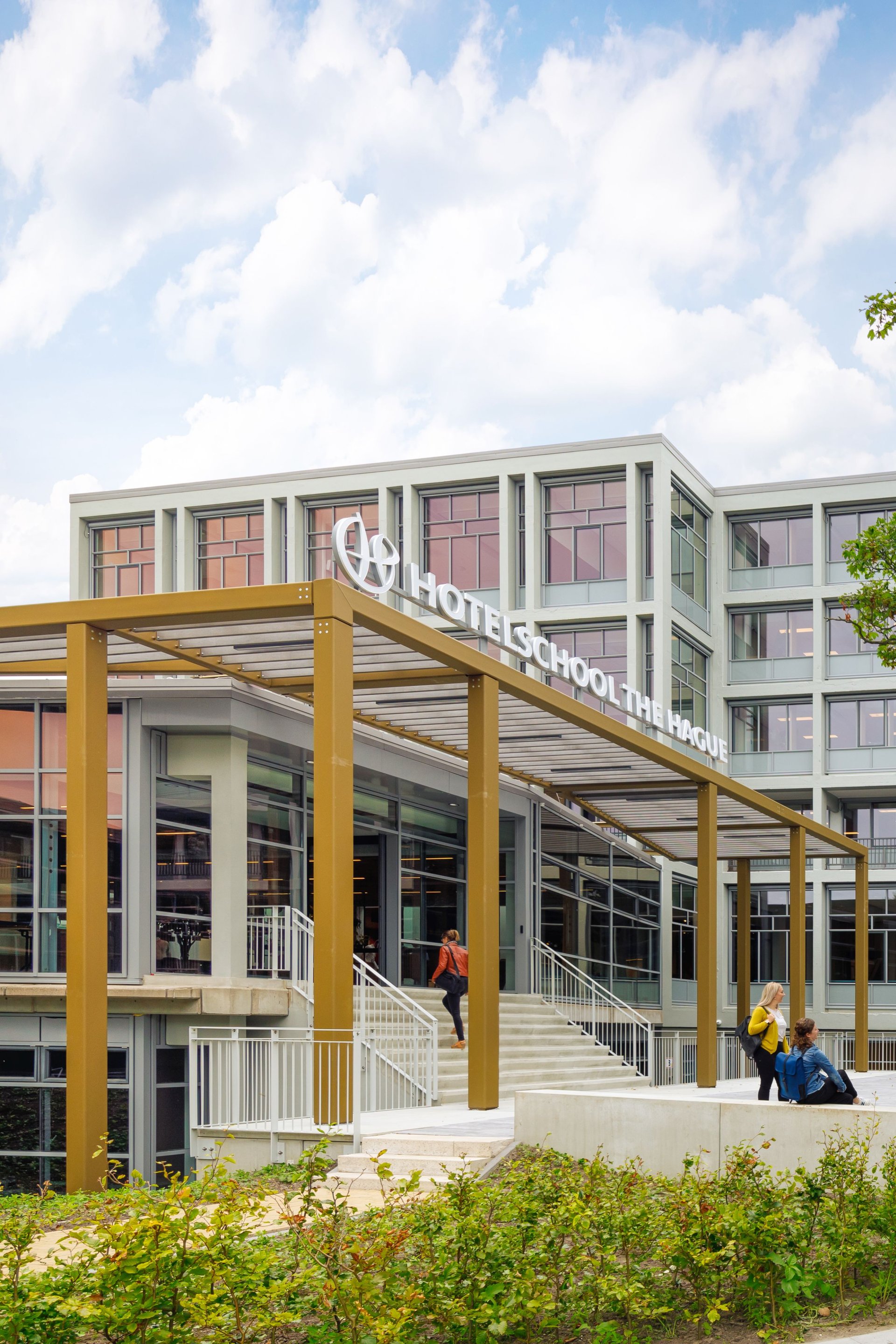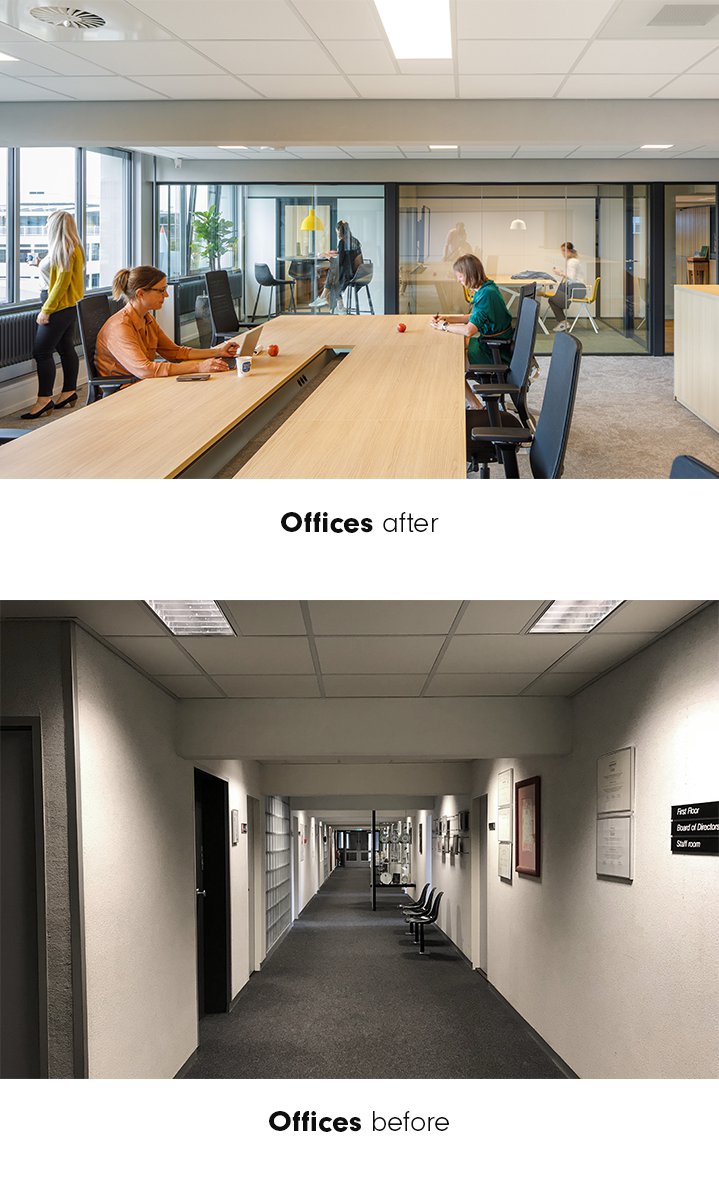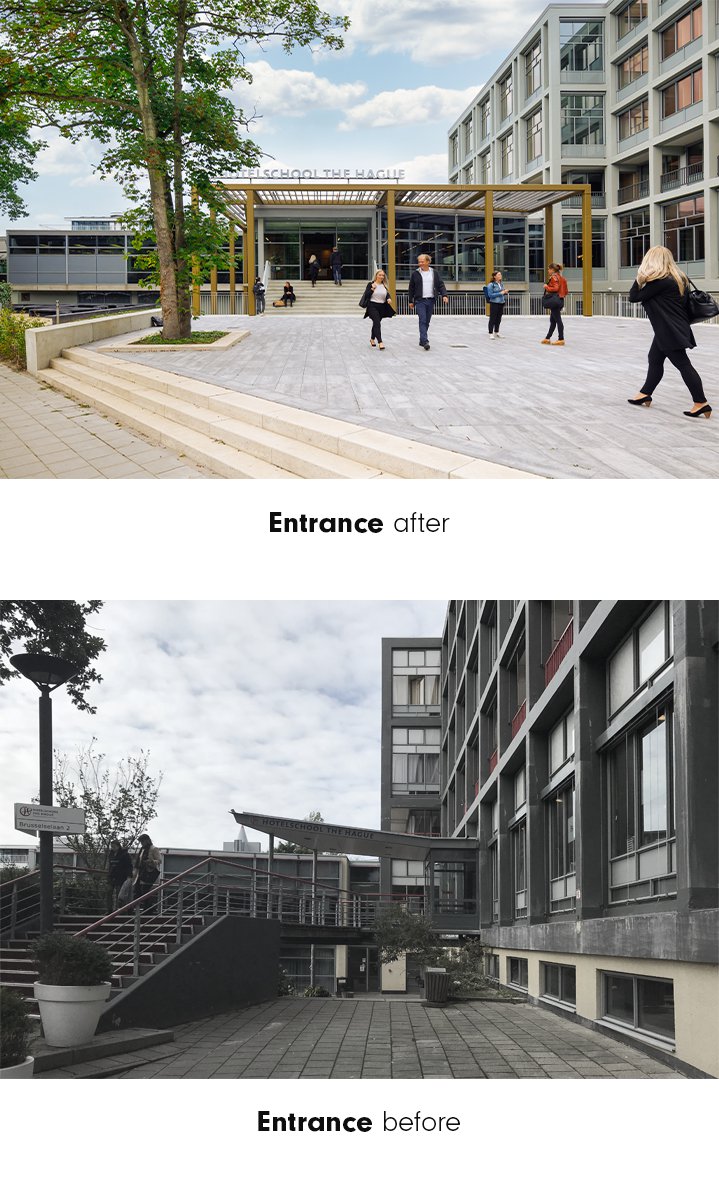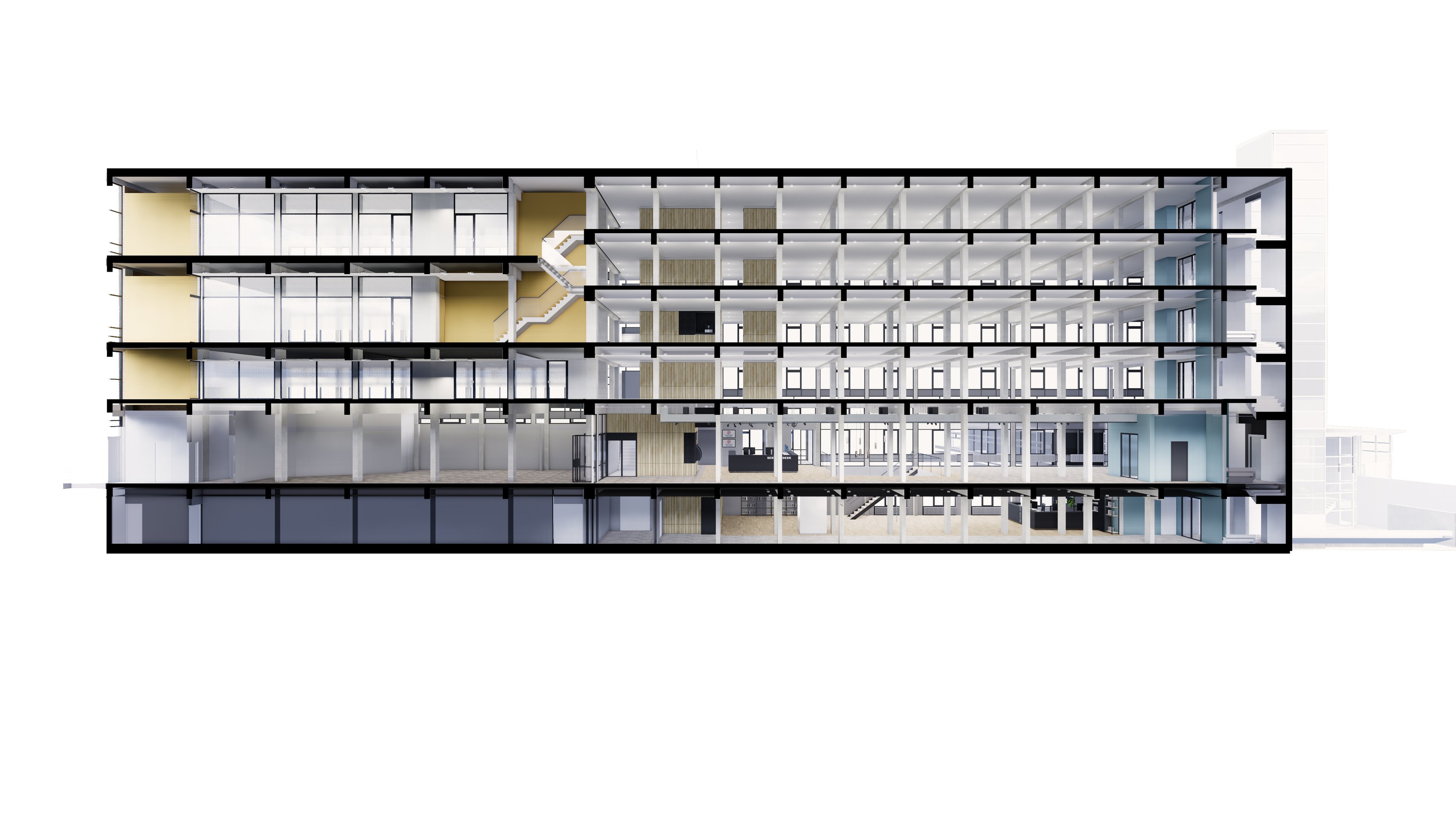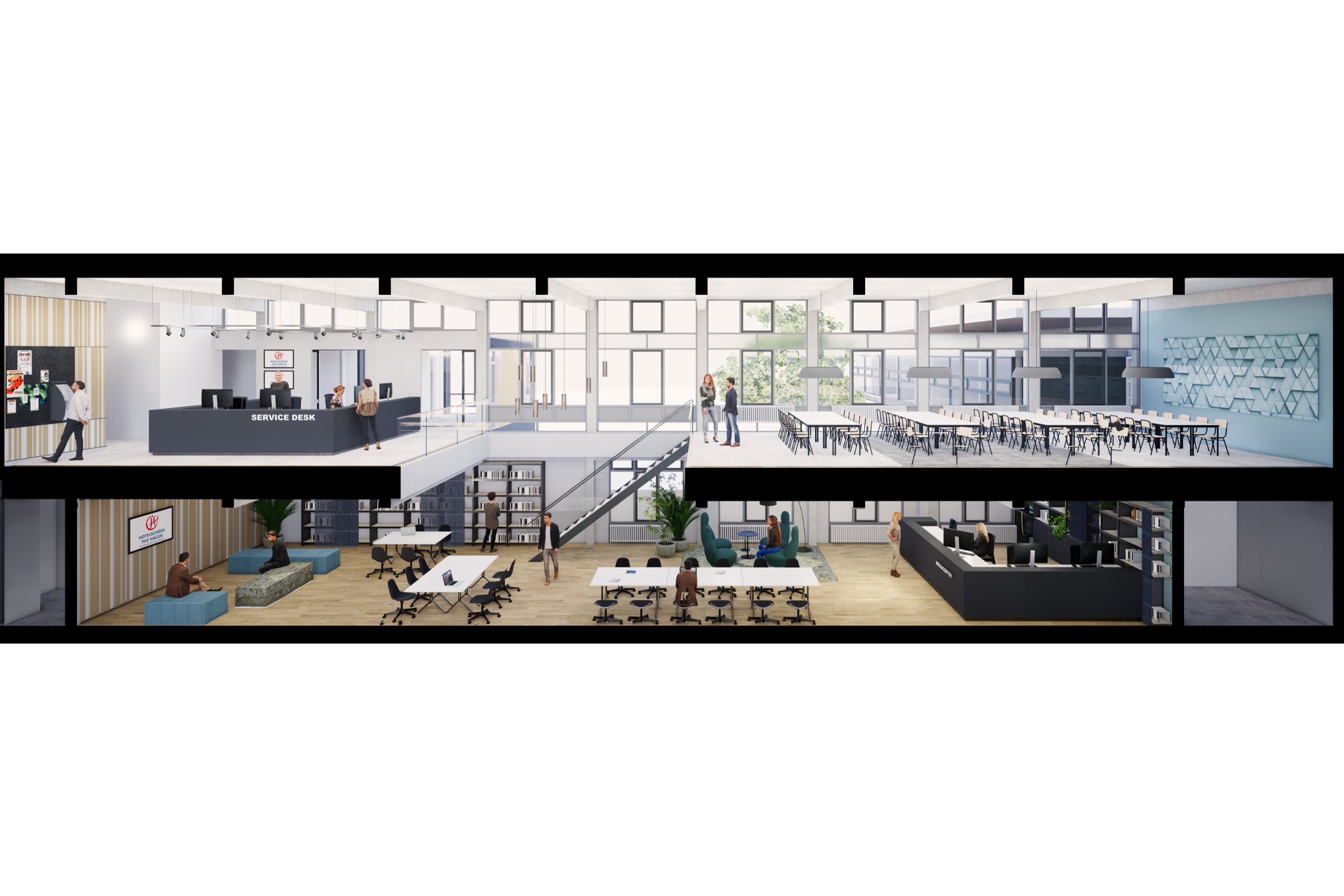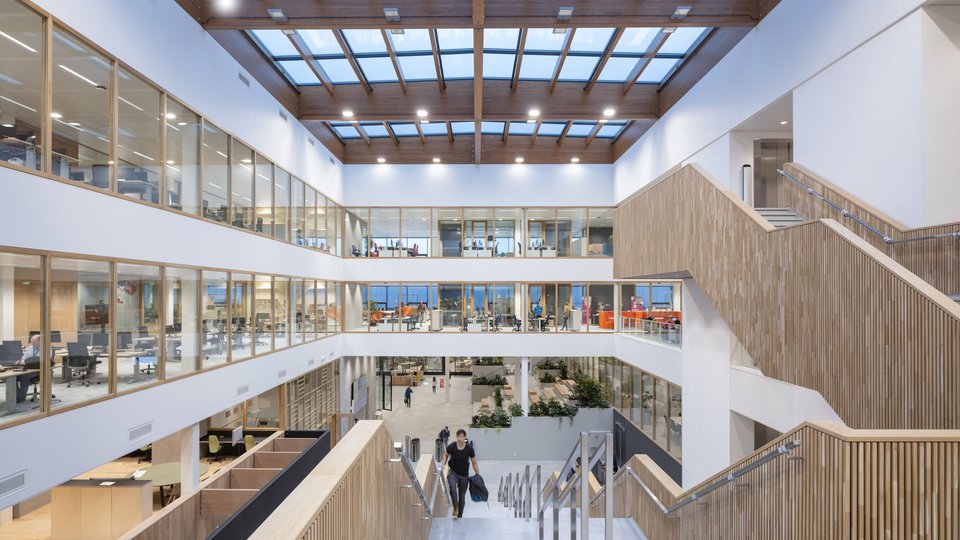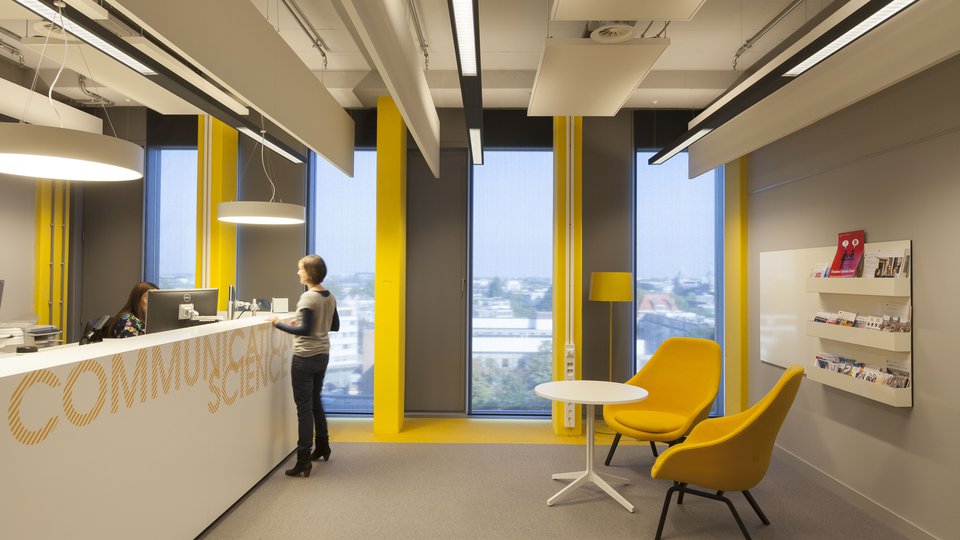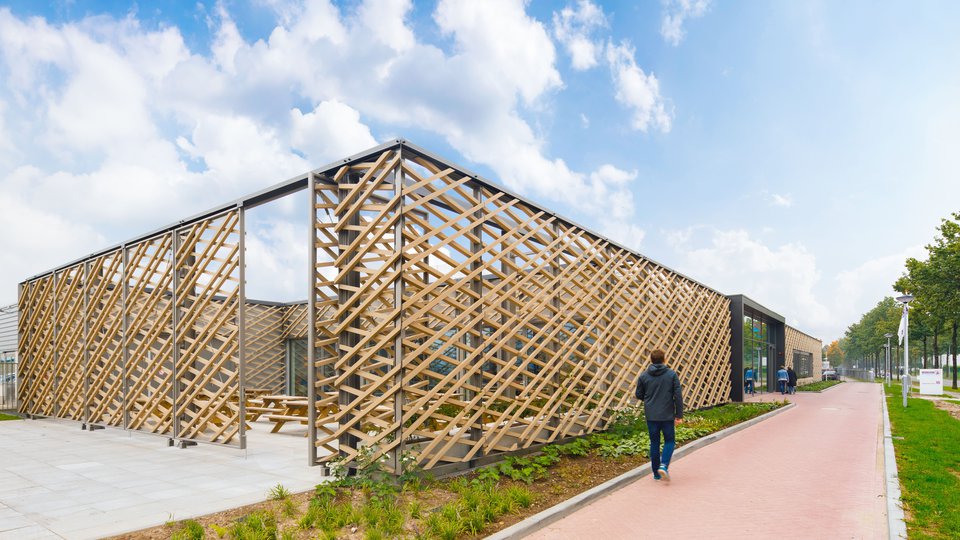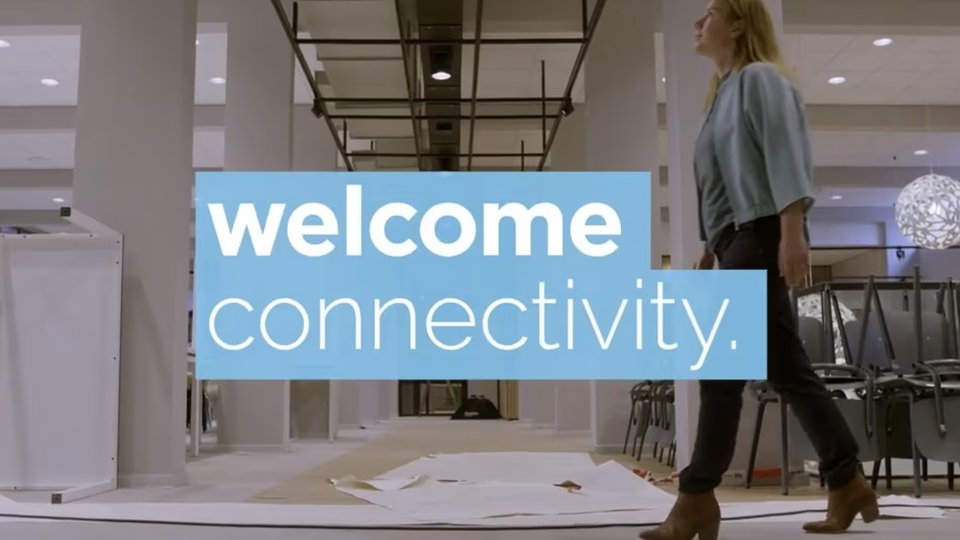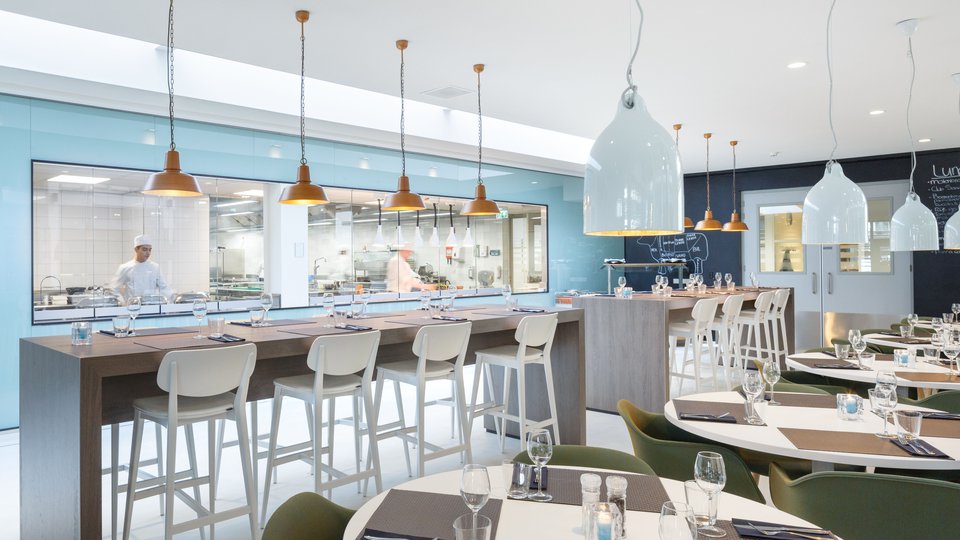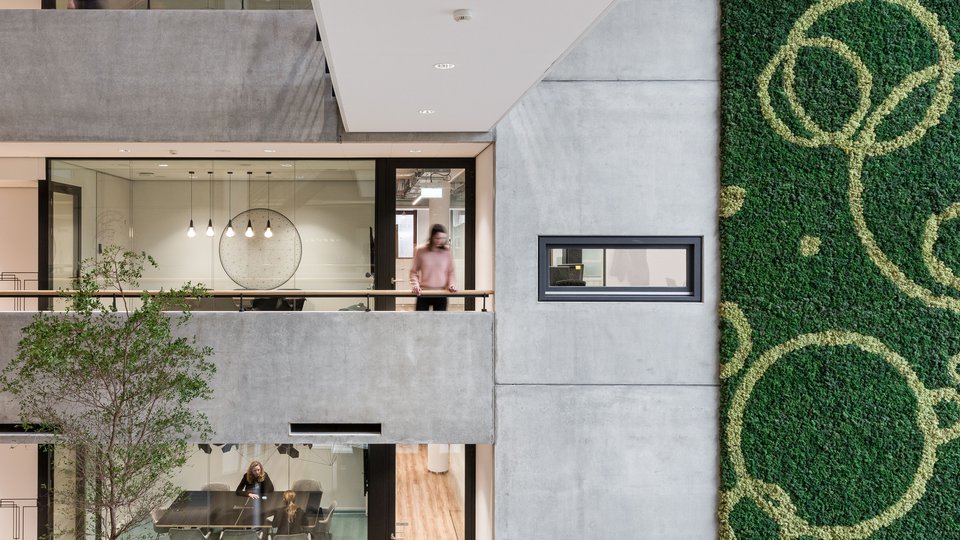| Client | Hotelschool |
| Location | Den Haag |
| Square | 9.000 |
| Timeline | January 2019 - August 2021 |
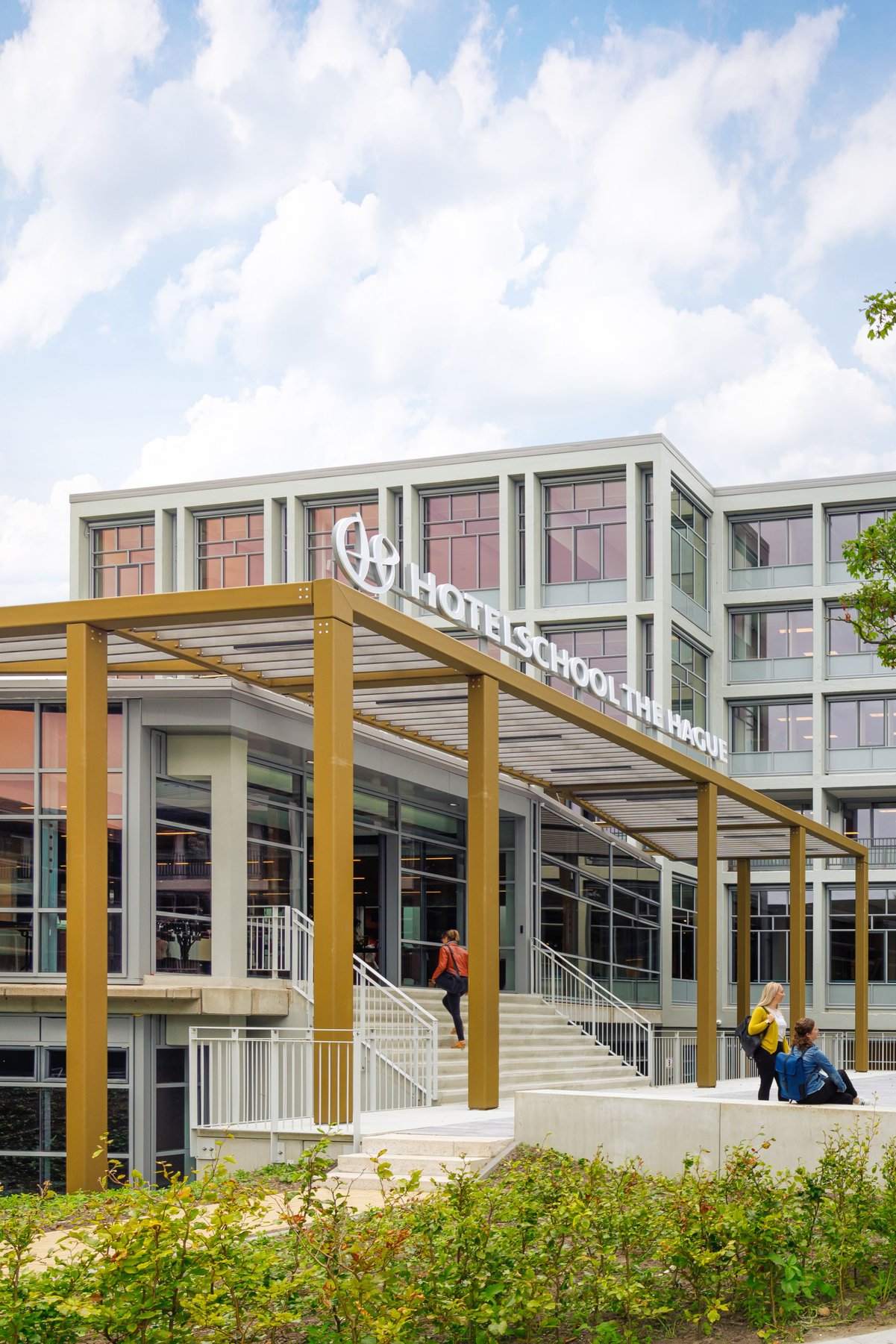
The principal building of the International Hotelschool The Hague dates from the 1960s. It has two extensions from the 1990s and with it, had lost its original clarity of structure. Due to the building's inefficient energy management, a renovation was imminent and seized upon to introduce space for contemporary educational concepts.
To unlock the potential of the building, its parts have been reconnected to form a coherent ensemble. A new annexe was constructed to facilitate moving the entrance to one of the earlier extensions. It subtly transforms the appearance of the Hotelschool campus from the surrounding park and streetscape.
The new annexe, with its overarching canopy, makes a self-evident connection to the urban tissue by giving way to a new, spacious schoolyard. In its design, executed in contrasting paint colours, the new structure subtly echoes the plasticity of the original 1960s building architecture with its split levels, recessed gallery, and elegantly dimensioned glass layout. A new colour scheme for the existing building exterior emphasizes its rhythmic qualities.
To do justice to the character of the Hospitality Business School, a generous reception now awaits students, teachers, and guests on entering the building which obtained a spacious, interconnected user journey throughout. Daylight is drawn into the interior by making voids, additional roof lights and smart positioning of the service areas. The redesign, new installations and façade all adhere to the user wellbeing and the creating of a connected community.

Voids to transform spaces
Analysis of the building revealed many opportunities to embed a transparent user experience throughout the building, moving the entrance was only the first step to unlock its potential.
A large void transforms the semi-basement into an attractive meeting hub and library. The reconfiguration of the entrance and the new schoolyard allows ample daylight to enter the souterrain, making the formerly dark archive space a valuable addition to the hospitality campus.
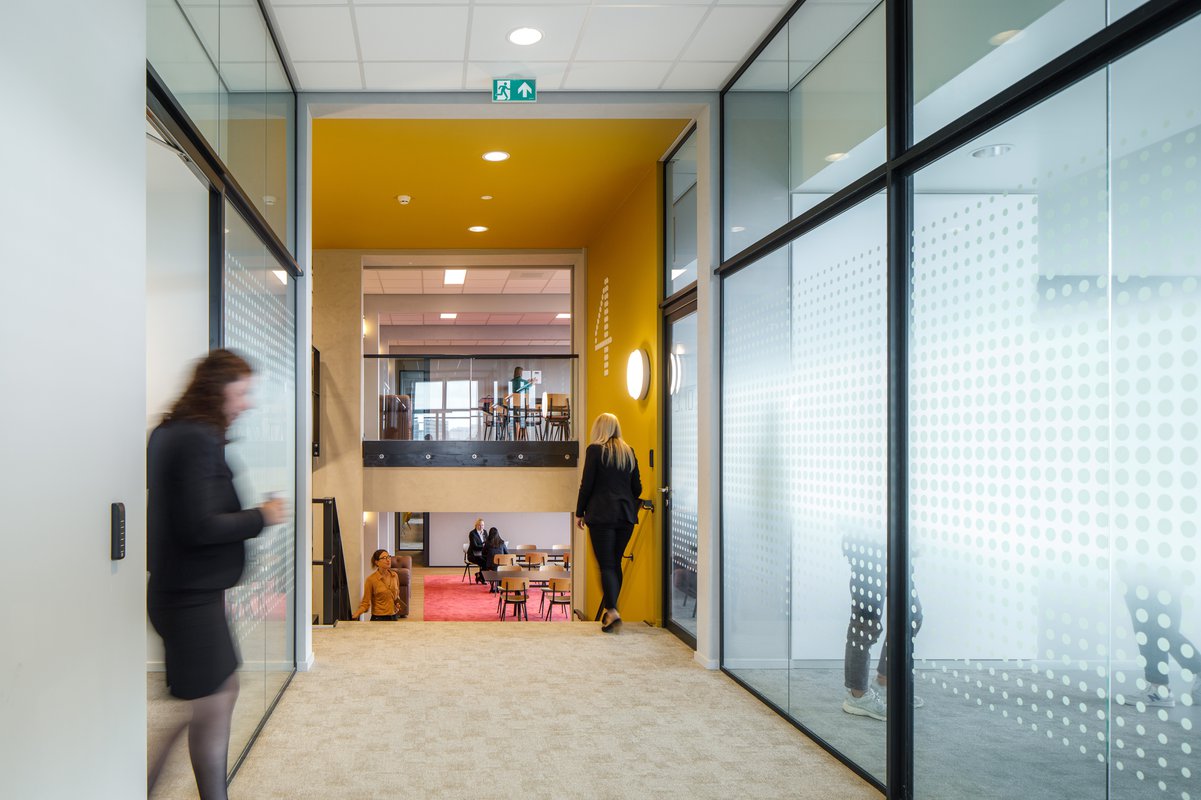
In the high-rise, a stack of smaller voids is introduced, interconnecting the office and education wings with a split level. By adding study zones here, next to the void, the former barrier between students and teachers becomes the space where they can meet each other, between classes.
With its voids, removal of walls and corridors, a more efficient layout is realised that accommodates additional study and workplaces with a spacious feel. Clear, transparent floor plans showcase the structure while steel-framed, glass partitions walls are placed in between the columns and beams with levels of transparency appropriate to the function.
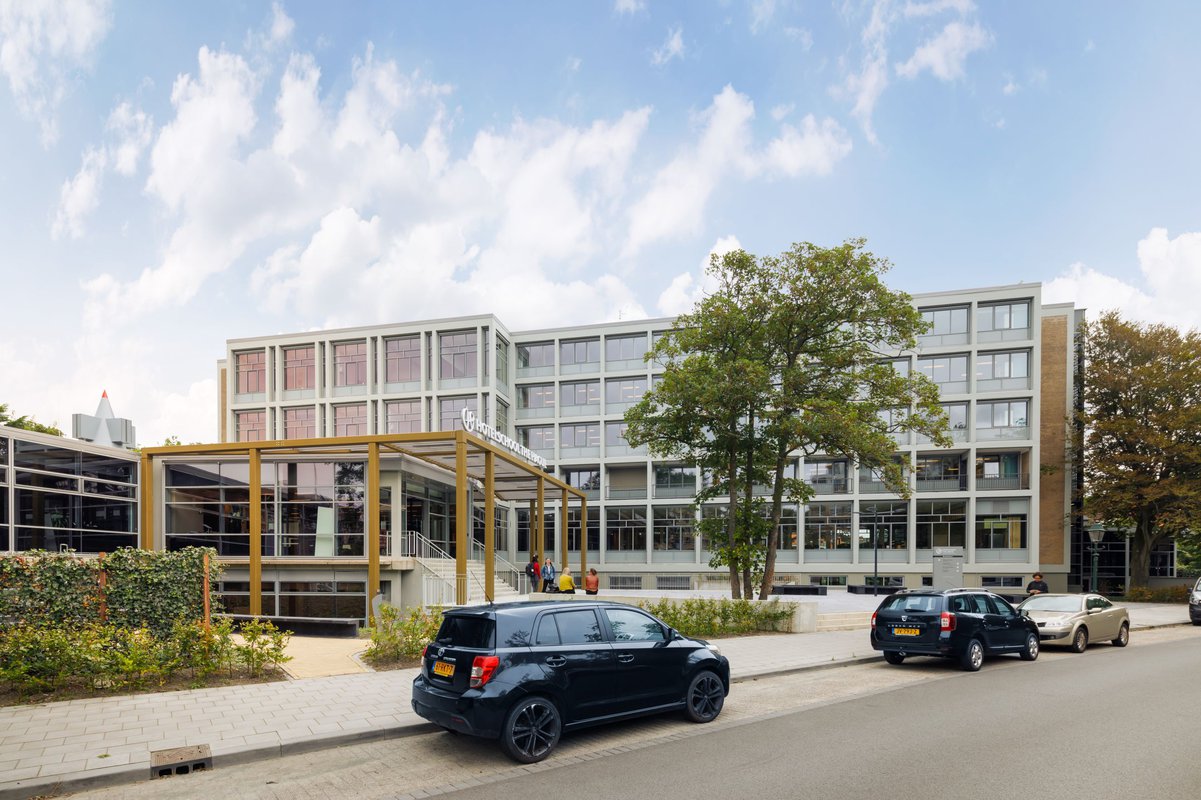
Sustainability
During the renovation, expectations of what was possible within the budget were exceeded thanks to a rational and efficient approach with a careful valuation of the building qualities. A new façade with triple glazing, the installation of a well-balanced ventilation concept with a heat exchange system and additional roof and wall insulation, led to an upgrade of the energy label from a level G to A. The building also features a green roof, solar panels, water-saving toilets and taps and a smart-building system with a presence detector to manage the lighting, CO2 levels and humidity. Daylight is drawn into the interior by making additional roof lights, voids and smart positioning of the service areas.

About Hotelschool
Hotelschool The Hague was founded in 1929, making it one of the oldest independent hotel schools in the world. It has over 2,600 students, with over 60 different nationalities and 200 staff members. They have a principal campus building in The Hague. Student residences and a student-run hotel are situated nearby. Hotelschool The Hague has a second campus in Amsterdam.
The Hotelschool building in The Hague is designed by Lucas & Niemeyer and completed in 1966 with a New Pragmatism, Modernist approach to architecture. With its sustainable renovation, completed in 2021, the accommodation is now future-ready, with updated standards on hospitality, education, comfort, safety and health to serve its community.
Empowered by the Hotelschool and supported by the municipality of The Hague, Fokkema & Partners created a coherent exterior and interior experience that restores the modest grandeur of the building architecture. This was achieved by working closely with Arcadis, Ooijevaar and many other construction partners.
Watch a video of the renovation via this link
We couldn’t add floors and height to the building, but we could seize opportunities to break through spaces and capture light.
